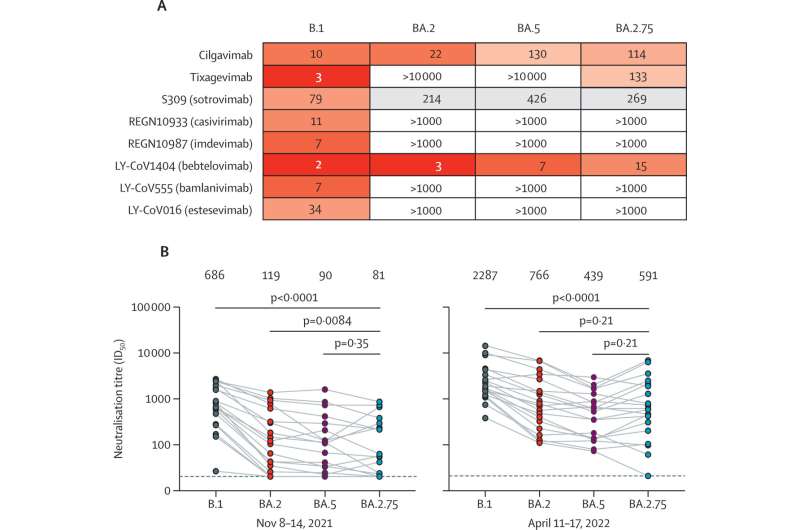Recent findings suggest new omicron BA.2.75 is as susceptible to antibodies as the currently dominant variant

In a recent study, researchers from Karolinska Institutet and others have characterized the new omicron variant BA.2.75, comparing its ability to evade antibodies against current and previous variants. The study, published in the journal The Lancet Infectious Diseases, suggests that BA.2.75 is not more resistant to antibodies than the currently dominating BA.5, which is positive news.
In May 2022, a new variant of omicron, BA.2.75, was detected, which is driving a wave of infections in India, and has spread internationally. In the last few weeks, BA.2.75 has also been detected in Sweden.
"Identifying how vulnerable the population is, right now, to emerging variants is crucial," says Daniel Sheward, researcher at the Department of Microbiology, Tumor and Cell Biology, Karolinska Institutet, and the study's first author. "By producing a pseudovirus for BA.2.75, we were able to test its sensitivity to antibodies present in blood donors."
Same level of resistance
Tests were carried out using 40 random blood samples taken in Stockholm, both before and after the first omicron wave.
"Our study shows that omicron BA.2.75 has approximately the same level of resistance to antibodies as the dominant variant BA.5, which is reassuring news if we were to suffer a BA.2.75 wave in Sweden," says Ben Murrell, assistant professor at the Department of Microbiology, Tumor and Cell Biology, Karolinska Institutet, and the study's senior author.
The researchers from Karolinska Institutet, University of Cape Town, South Africa, ETH Zürich, Switzerland, Karolinska University Hospital, and Imperial College London, Great Britain, have also investigated whether antiviral monoclonal antibodies, which are used clinically to treat already infected patients, lose their effect against omicron BA.2.75, compared to BA.5. Here, too, the researchers found no alarming differences.
Ben Murrell's lab will continue to monitor new mutations that are arising in omicron sublineages that may undermine vaccines.
More information: Daniel J Sheward et al, Evasion of neutralising antibodies by omicron sublineage BA.2.75, The Lancet Infectious Diseases (2022). DOI: 10.1016/S1473-3099(22)00524-2



















